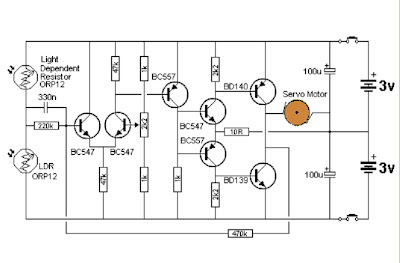

 Proposed enclosure
Proposed enclosure |
| 47 Watt BTL Audio Power Amplifier 4-channel |

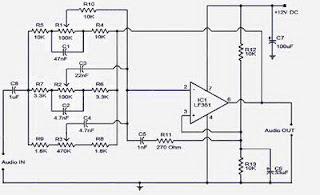
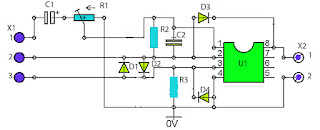
 |
| PCB design Views |



 Proposed enclosure
Proposed enclosure If the fans should fail, for example, the maximum temperature limit would lie at a considerably higher level than the desired value. The accompanying circuit, which compares the magnitude of the fan voltage to a fixed reference value, has been developed to allow the maximum temperature to be reliably detected. This circuit is tailored for 12-V fans. The reference voltage is generated by the ‘micro power voltage reference’ D1 and the FET T1, which is wired as a current source. These components are powered directly from the applied fan voltage. The current source is set up to deliver approximately 50µA.
If the fans should fail, for example, the maximum temperature limit would lie at a considerably higher level than the desired value. The accompanying circuit, which compares the magnitude of the fan voltage to a fixed reference value, has been developed to allow the maximum temperature to be reliably detected. This circuit is tailored for 12-V fans. The reference voltage is generated by the ‘micro power voltage reference’ D1 and the FET T1, which is wired as a current source. These components are powered directly from the applied fan voltage. The current source is set up to deliver approximately 50µA. D1 can work with as little as 10µA. The supply voltage for the IC is decoupled by R10, C3 and C4, with D4 providing over voltage protection. A maximum supply voltage of 16 V is specified for the TLC271. This opamp works with a supply voltage as low as 3 V and can handle a common-mode voltage up to approximately 1.5 V less than the positive supply voltage. Accordingly, 1.2 V has been chosen for the reference voltage. The fan voltage is reduced to the level of the reference voltage by the voltage divider R2–R3–P1. The limits now lie at 11.2 V and 16.7V.
D1 can work with as little as 10µA. The supply voltage for the IC is decoupled by R10, C3 and C4, with D4 providing over voltage protection. A maximum supply voltage of 16 V is specified for the TLC271. This opamp works with a supply voltage as low as 3 V and can handle a common-mode voltage up to approximately 1.5 V less than the positive supply voltage. Accordingly, 1.2 V has been chosen for the reference voltage. The fan voltage is reduced to the level of the reference voltage by the voltage divider R2–R3–P1. The limits now lie at 11.2 V and 16.7V. If you find these values too high, you can reduce R2 to 100 kΩ, which will shift the limits to 9.5 V and 14.2 V. The output of the voltage divider is well decoupled by C2. A relatively large time constant was selected here to prevent the circuit from reacting too quickly, and to hold the output active for a bit longer after the comparator switches states. A small amount of hysteresis (around 1 mV) is added by R4 and R5, to prevent instability when the comparator switches. D2 ensures that the magnitude of the hysteresis is independent of the supply voltage. Two outputs have been provided to make the circuit more versatile.
If you find these values too high, you can reduce R2 to 100 kΩ, which will shift the limits to 9.5 V and 14.2 V. The output of the voltage divider is well decoupled by C2. A relatively large time constant was selected here to prevent the circuit from reacting too quickly, and to hold the output active for a bit longer after the comparator switches states. A small amount of hysteresis (around 1 mV) is added by R4 and R5, to prevent instability when the comparator switches. D2 ensures that the magnitude of the hysteresis is independent of the supply voltage. Two outputs have been provided to make the circuit more versatile. Output ‘R’ is intended to directly drive the LED of an optocoupler. In addition, transistor T2 is switched on by the output of the opamp via R7 and R8, so that a relay can be actuated or a protection circuit triggered using the ‘T’ output. The high-efficiency LED D3 indicates that IC1 has switched. It can be used as a new ‘maximum’ temperature’ indicator when this circuit is added to the fan controller. The circuit draws only 0.25 mA when the LED is out, and the measured no-load current consumption (with a 12.5V supply voltage) is 2.7 mA when the LED is on.
Output ‘R’ is intended to directly drive the LED of an optocoupler. In addition, transistor T2 is switched on by the output of the opamp via R7 and R8, so that a relay can be actuated or a protection circuit triggered using the ‘T’ output. The high-efficiency LED D3 indicates that IC1 has switched. It can be used as a new ‘maximum’ temperature’ indicator when this circuit is added to the fan controller. The circuit draws only 0.25 mA when the LED is out, and the measured no-load current consumption (with a 12.5V supply voltage) is 2.7 mA when the LED is on.Summertime is holiday time but who will be looking after your delicate houseplants while you are away? Caring for plants is very often a hit or miss affair, sometimes you under-water and other times you over-water. This design seeks to remove the doubt from plant care and keep them optimally watered.
The principle of the circuit is simple: first the soil dampness is measured by passing a signal through two electrodes placed in the soil. The moisture content is inversely proportional to the measured resistance. When this measurement indicates it is too dry, the plants are given a predefined dose of water. This last part is important for the correct function of the automatic watering can because it takes a little while for the soil to absorb the water dose and for its resistance to fall. If the water were allowed to flow until the soil resistance drops then the plant would soon be flooded.
Circuit diagram :

An Electronic Watering Can Circuit Diagram
The circuit shows two 555 timer chips IC1 and IC2. IC1 is an astable multivibrator producing an ac coupled square wave at around 500 Hz for the measurement electrodes F and F1. An ac signal reduces electrode corrosion and also has less reaction with the growth-promoting chemistry of the plant. Current flowing between the electrodes produces a signal on resistor R13. The signal level is boosted and rectified by the voltage doubler produced by D2 and D3. When the voltage level on R13 is greater than round 1.5 V to 2.0 V transistor T2 will conduct and switch T3. Current flow through the soil is in the order of 10 µA.
T2 and T3 remain conducting providing the soil is moist enough. The voltage level on pin 4 of IC2 will be zero and IC2 will be disabled. As the soil dries out the signal across R13 gets smaller until eventually T2 stops conducting and T3 is switched off. The voltage on pin 4 of IC2 rises to a ‘1’ and the chip is enabled. IC2 oscillates with an ‘on’ time of around 5 s and an ‘off’ time (adjustable via P2) of 10 to 20 s. This signal switches the water pump via T1. P1 allows adjustment of the minimum soil moisture content necessary before watering is triggered.
The electrodes can be made from lengths of 1.5 mm2 solid copper wire with the insulation stripped off the last 1 cm. The electrodes should be pushed into the earth so that the tips are at roughly the same depth as the plant root ball. The distant between the electrodes is not critical; a few centimetres should be sufficient. The electrode tips can be tinned with solder to reduce any biological reaction with the copper surface. Stainless steel wire is a better alternative to copper, heat shrink sleeving can used to insulate the wire with the last 1 cm of the electrode left bare. Two additional electrodes (F1) are con nected in parallel to the soil probe electrodes (F). The F1 electrodes are for safety to ensure that the pump is turned off if for some reason water collects in the plant pot saucer. A second safety measure is a float switch fitted to the water reservoir tank.
When the water level falls too low a floating magnet activates a reed switch and turns off the pump so that it is not damaged by running with a dry tank. Water to the plants can be routed through closed end plastic tubing (with an internal diameter of around 4 to 5 mm) to the plant pots. The number of 1 mm to 1.5 mm outlet holes in the pipe will control the dose of water supplied to each plant. The soil probes can only be inserted into one flowerpot so choose a plant with around average water consumption amongst your collection. Increasing or decreasing the number of holes in the water supply pipe will adjust water supply to the other plants depending on their needs. A 12 V water pump is a good choice for this application but if you use a mains driven pump it is essential to observe all the necessary safety precautions.
Last but not least the electronic watering can is too good to be used just for holiday periods, it will ensure that your plants never suffer from the blight of over or under-watering again; provided of course you remember to keep the water reservoir topped up…
Author : Robert Edlinger - Copyright : Elektor
Low power inverter schematic are only use 9 components , one of which IC 556 , TIP120 NPN Darlington transistor.And turns 10 to 16 Vdc into 60 HZ, output 115 V square-wave power to operate ac equipment up to 25 W. In the circuit first ic originally hires as a timer chip m for stabilizatiom oscilator with components R1 and C1 setting frequency oscilator. Then the two transistor driver, drive the transformer push-pull fashion, When one transistor is biased on , the other circuit cut-off . The transformer is a 120V/18Vct unit that is connected backwards, so that it steps the voltage up rather than down. Oscilator circuit operates from about 4 to 16 V for stable output.
Part List :
R1 = 1K
R2 = 12K
R3 = 1K
R4 = 1/4W
C1 = 1uF
IC = 556
Q1 = TIP120
Q2 = TIP120
T1 = 120V 18VCT
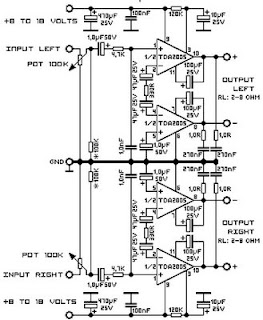
 |
| Audio Mixer Circuit Diagam |
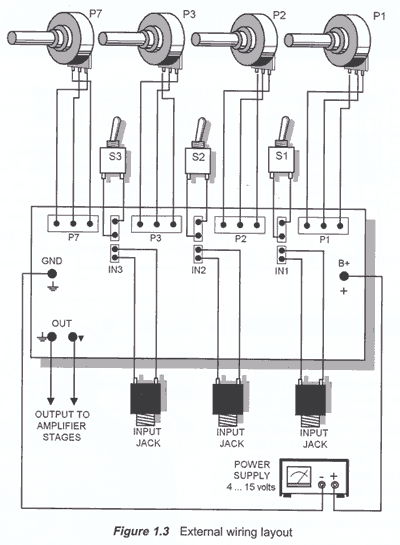 |
| Audio Mixer Circuit digram |
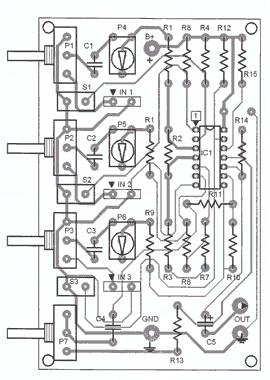 |
| Audio Mixer layout |
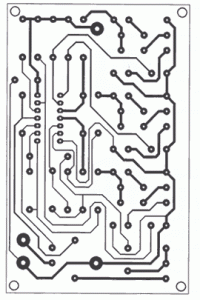 |
| PCB Audio Mixer |




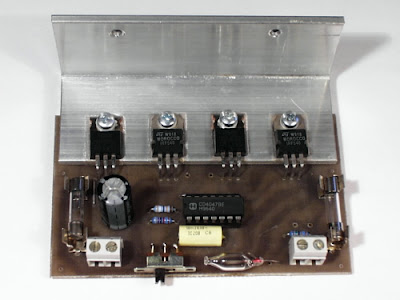
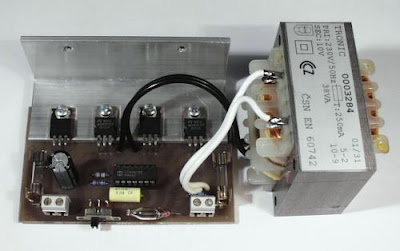

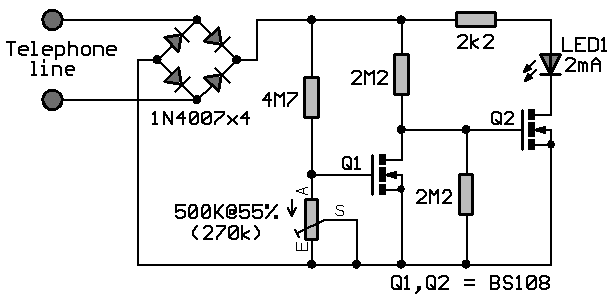
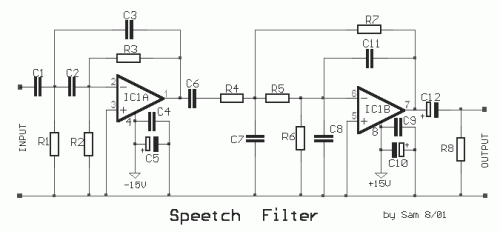



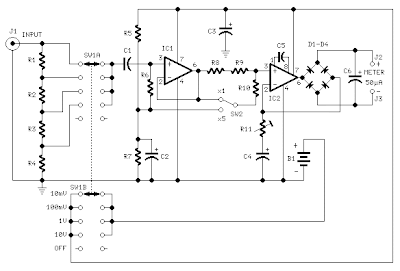
R1_____909K 1/2W 1% Metal Oxide ResistorR2______90K9 1/2W 1% Metal Oxide ResistorR3_______9K09 1/2W 1% Metal Oxide ResistorR4_______1K01 1/2W 1% Metal Oxide ResistorR5_____100K 1/4W ResistorR6_______2M2 1/4W ResistorR7______82K 1/4W ResistorR8______12K 1/4W ResistorR9_______1K2 1/4W ResistorR10______3K3 1/4W ResistorR11____200R 1/2W Trimmer Cermet
C1_____330nF 63V Polyester CapacitorC2,C3__100µF 25V Electrolytic Capacitor
C4_____220µF 25V Electrolytic CapacitorC5______33pF 63V Polystyrene CapacitorC6_______2µ2 63V Electrolytic CapacitorD1-D4___1N4148 75V 150mA Diodes IC1_____CA3140 Op-amp
IC2_____CA3130 Op-amp
SW1_____2 poles 5 ways rotary switch
SW2_____SPDT switch
J1______RCA audio input socket
J2,J3___4mm. output socketsB1______9V PP3 Battery
Clip for PP3 Battery



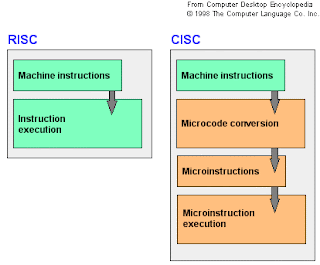 |
| RISC vs. CISC: What is the differences? |
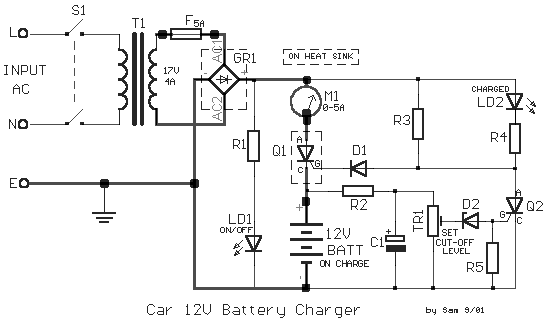 Car Battery Charger 12Volt Circuit Diagram
Car Battery Charger 12Volt Circuit Diagram The aloft circuit claimed accept adeptness to anticipate array blackmail that accomplish electrolyte absent due to evaporation. This ambit will annihilate the problems by ecology the battery’s action of allegation through its attendant ascendancy ambit by applying a aerial allegation accepted until the array is absolutely charged. Back charging is complete, it turns on the red LED (LD2) and deactivates the charging circuit.
This ambit is fatigued to allegation 12V batteries ONLY. Certain accent should be taken back base up this circuit. They are the access of the agent to the ambit board, and those bartering accepted to the array actuality charged. These access should be fabricated with cables accepting a ample cross-sectional breadth to anticipate voltage-drop and calefaction accession back accepted flows through them.
 Maximum Minimum Voltage Indicator Circuit Diagram
Maximum Minimum Voltage Indicator Circuit Diagram
| 3 Watt stereo amplifier circuit |
